1
/
of
10
Antique Georgian Carnelian Intaglio/Seal Engraving of Halley and His Comet Sterling Silver Signet Ring
Antique Georgian Carnelian Intaglio/Seal Engraving of Halley and His Comet Sterling Silver Signet Ring
Materials
Materials
Silver, Carnelian
Date & Origin
Date & Origin
Georgian (1714 - 1830)
Measurements
Measurements
UK Size L 1/2 or US Size 5 7/8
Antique Georgian Carnelian Intaglio/Seal Engraving of Halley and His Comet. Sterling Silver Signet Ring.
This well made ring dates from the Georgian period, and commemorates Edmond Halley who was perhaps the second-greatest genius in the history of British astronomy. By chance, he lived at the same time as Isaac Newton.
It is manufactured in sterling silver, and has an oval carnelian in the centre with the intaglio of Edmond Halley and his Comet engraved in the centre.
Halley was born in 1656. Edmond turned to astronomy when he was in his teens and he went to Oxford University in 1673, where he proved himself a brilliant student. He soon came to the attention of the newly appointed Astronomer Royal, John Flamsteed, with whom Halley observed at Greenwich.
Halley possessed self-confidence and ambition equal to his intellect. Without waiting to finish his studies at Oxford, he persuaded his father to support him on a two-year trip to the island of St Helena in the South Atlantic, from where he planned to catalogue the southern stars as Flamsteed was doing for those in the north. Coming from any other 19-year-old, it would have sounded embarrassingly presumptuous. Halley returned in 1678 with the job accomplished. He was rewarded with the accolades of the Royal Society and its patron, King Charles II, who ordered Oxford University to award Halley his master’s degree.
He formed a view that all of the sightings between 1531 and 1682 were actually one single comet, which circled the sun every 75-76 years. Halley predicted that it would return again in 1759 and, when it did, it received its name. This was the comet that would one day bear his name. The next sighting was in 1835 and, soon after, jewellers began creating Halley’s Comet rings, which were influenced by the shape of the comet as it approached the sun, it heated up and produced a tail that streaks away from the comet’s head.
The comets tail is visible within the intaglio engraving of the ring.
Unmarked, tests sterling silver.
Carnelian measures 21.0mm x 17.2mm.
Head of the ring measures approx. 22.7mm x 18.8mm and 5.9mm in depth.
Shank measures 3.1mm in width.
Ring weighs 7.0g.
The ring size is currently L 1/2 (UK Scale) or 5 7/8 (US Size) but can be modified a few sizes either way free of charge in our own comprehensive workshops.
Overall a wearable piece of genuine antique ring dating from the Georgian era, circa 1810- 1835.
CONDITION: Overall good, with some wear commensurate with age, particularly to the top of the crest/seal engraving.
This is a preloved item, making it excellent value for your money when compared to a new equivalent.
It has been professionally cleaned in our workshop.
This well made ring dates from the Georgian period, and commemorates Edmond Halley who was perhaps the second-greatest genius in the history of British astronomy. By chance, he lived at the same time as Isaac Newton.
It is manufactured in sterling silver, and has an oval carnelian in the centre with the intaglio of Edmond Halley and his Comet engraved in the centre.
Halley was born in 1656. Edmond turned to astronomy when he was in his teens and he went to Oxford University in 1673, where he proved himself a brilliant student. He soon came to the attention of the newly appointed Astronomer Royal, John Flamsteed, with whom Halley observed at Greenwich.
Halley possessed self-confidence and ambition equal to his intellect. Without waiting to finish his studies at Oxford, he persuaded his father to support him on a two-year trip to the island of St Helena in the South Atlantic, from where he planned to catalogue the southern stars as Flamsteed was doing for those in the north. Coming from any other 19-year-old, it would have sounded embarrassingly presumptuous. Halley returned in 1678 with the job accomplished. He was rewarded with the accolades of the Royal Society and its patron, King Charles II, who ordered Oxford University to award Halley his master’s degree.
He formed a view that all of the sightings between 1531 and 1682 were actually one single comet, which circled the sun every 75-76 years. Halley predicted that it would return again in 1759 and, when it did, it received its name. This was the comet that would one day bear his name. The next sighting was in 1835 and, soon after, jewellers began creating Halley’s Comet rings, which were influenced by the shape of the comet as it approached the sun, it heated up and produced a tail that streaks away from the comet’s head.
The comets tail is visible within the intaglio engraving of the ring.
Unmarked, tests sterling silver.
Carnelian measures 21.0mm x 17.2mm.
Head of the ring measures approx. 22.7mm x 18.8mm and 5.9mm in depth.
Shank measures 3.1mm in width.
Ring weighs 7.0g.
The ring size is currently L 1/2 (UK Scale) or 5 7/8 (US Size) but can be modified a few sizes either way free of charge in our own comprehensive workshops.
Overall a wearable piece of genuine antique ring dating from the Georgian era, circa 1810- 1835.
CONDITION: Overall good, with some wear commensurate with age, particularly to the top of the crest/seal engraving.
This is a preloved item, making it excellent value for your money when compared to a new equivalent.
It has been professionally cleaned in our workshop.
Share
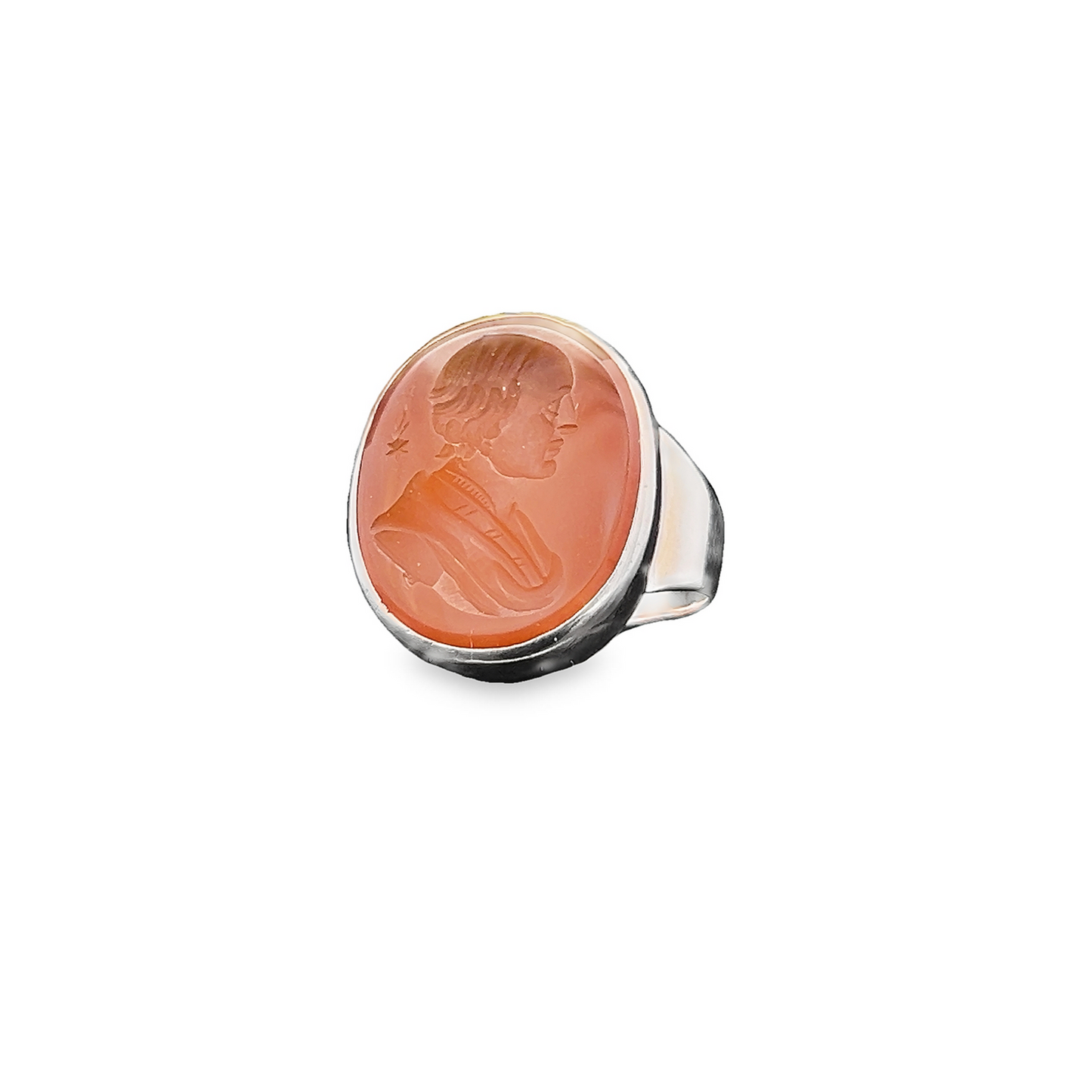
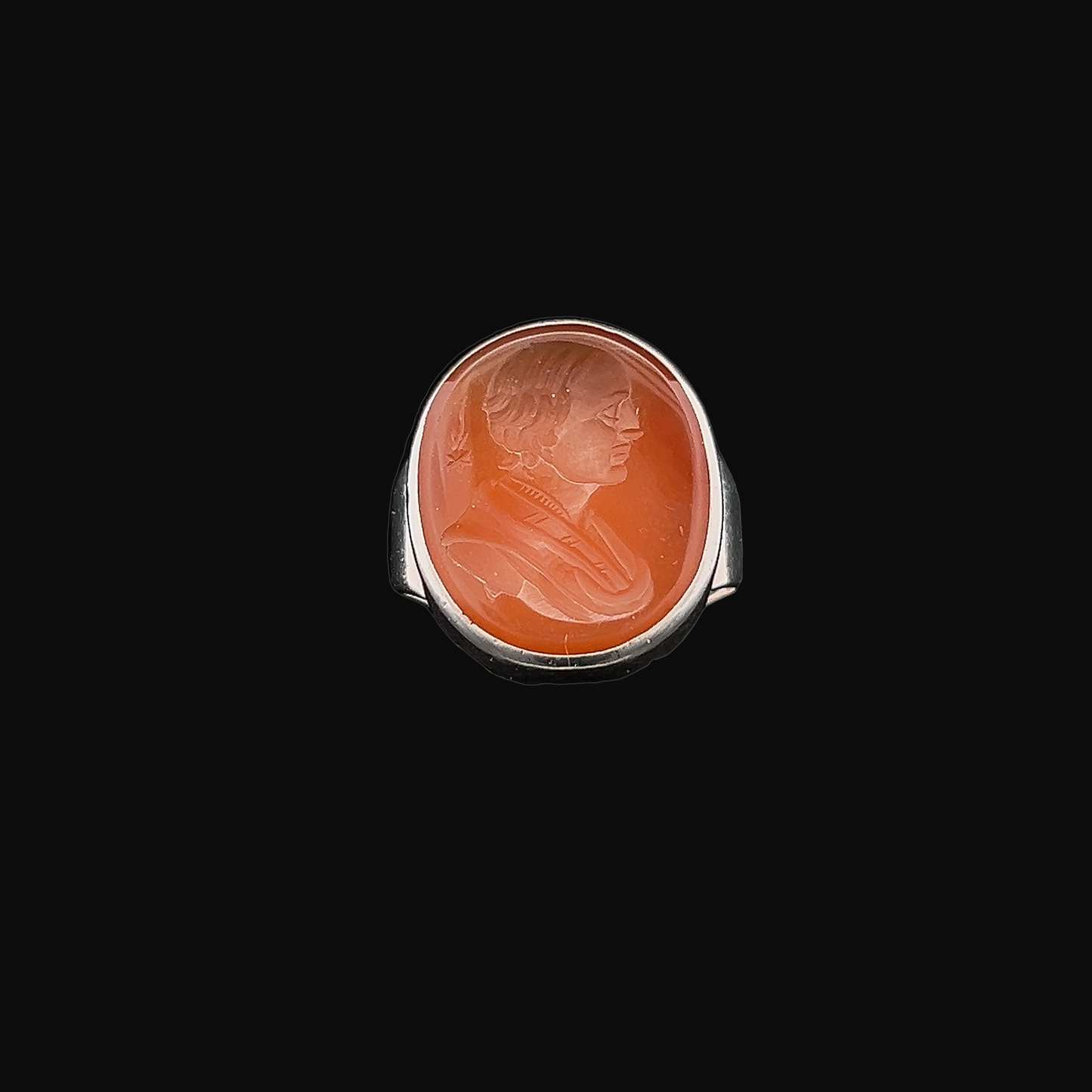
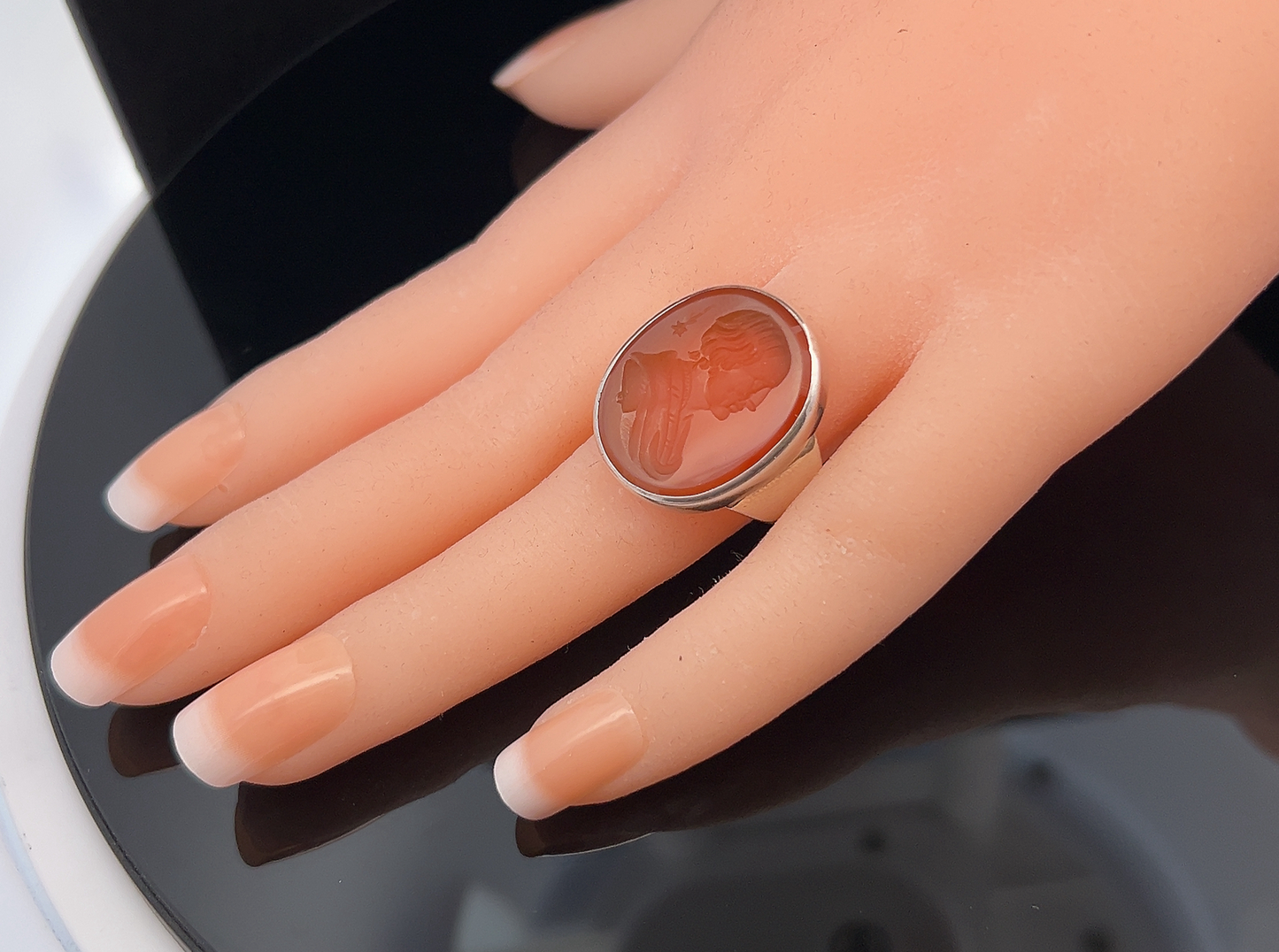
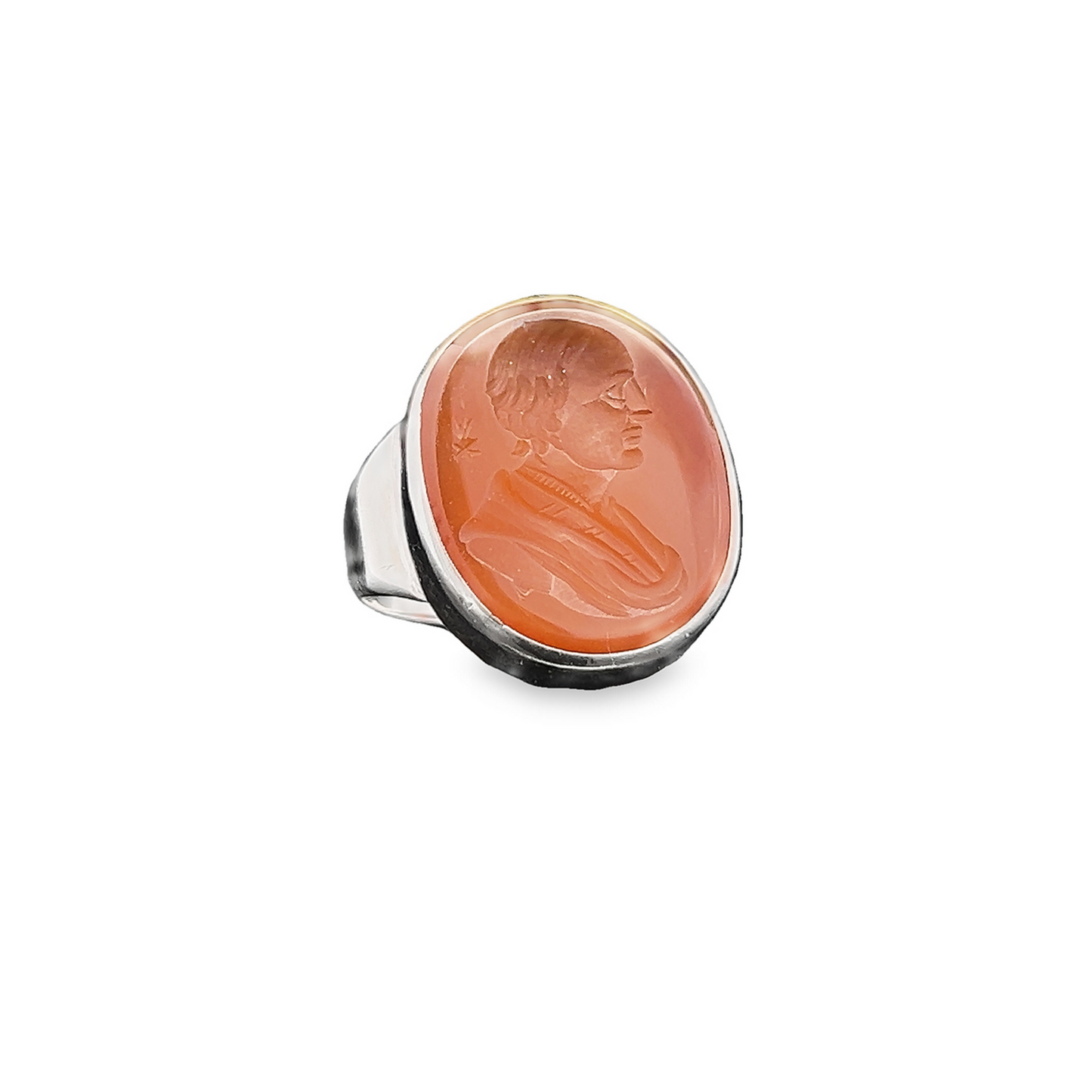
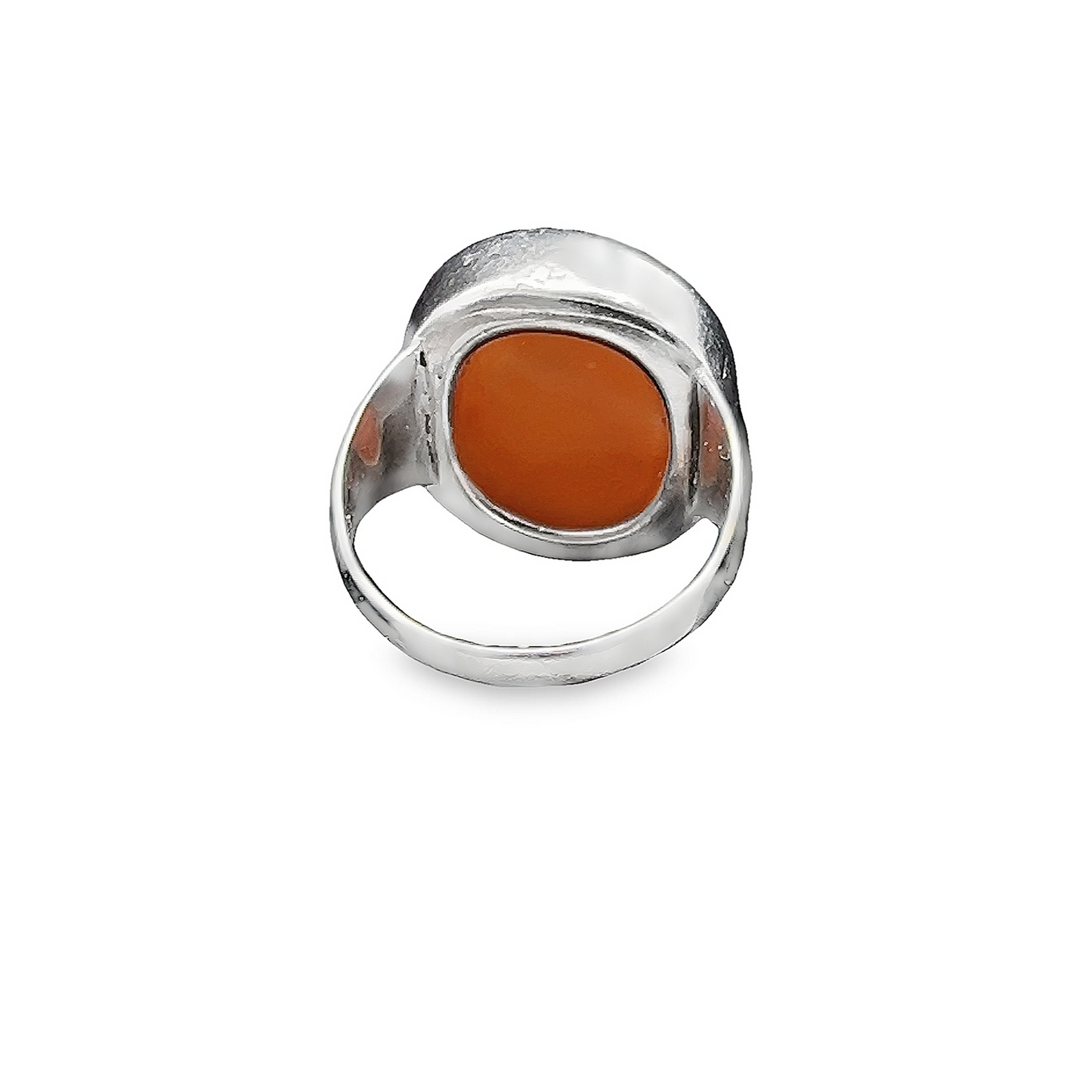

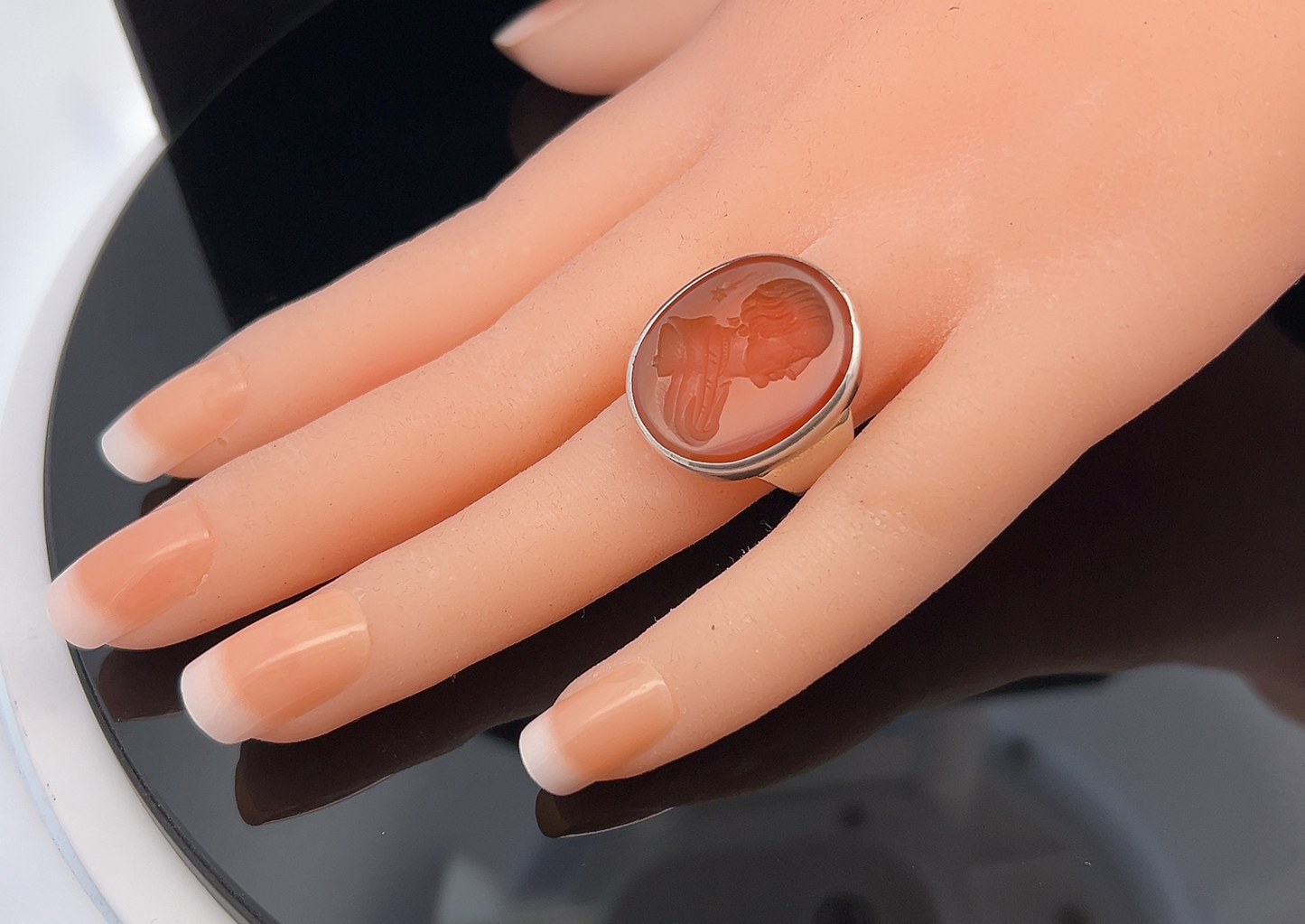

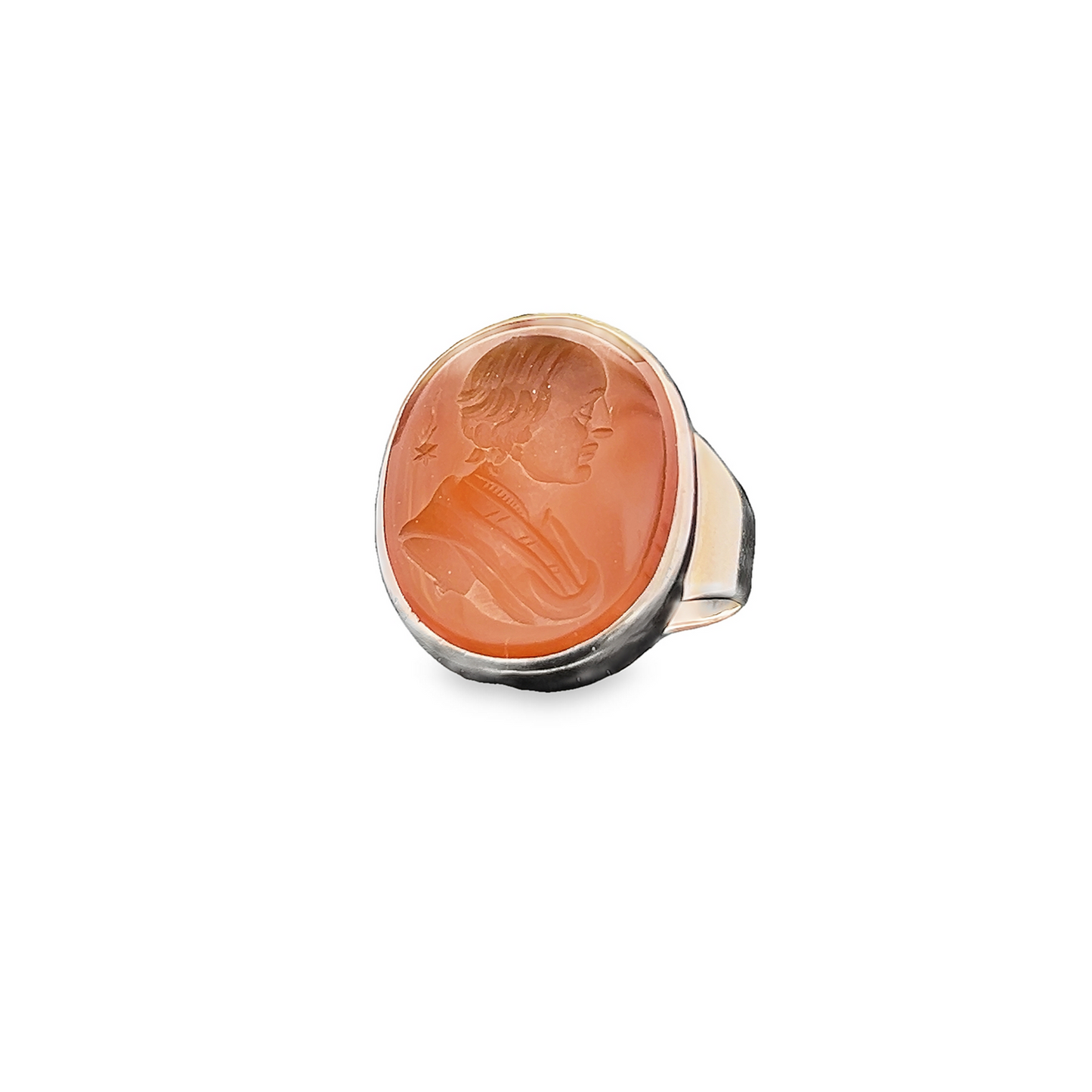
Make an Enquiry
<div translate="no" class='mailmunch-forms-widget-1148182'></div>










